
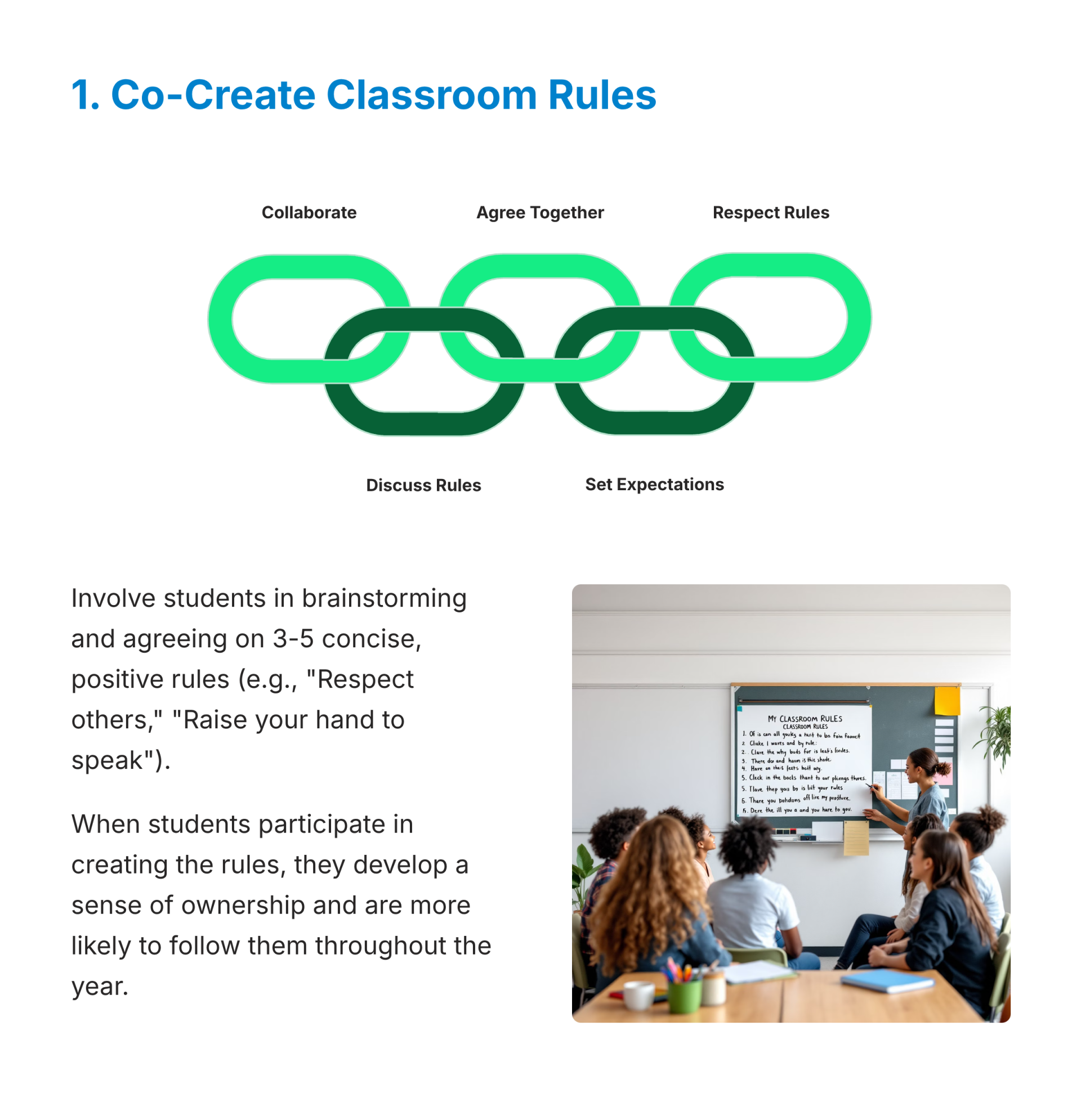


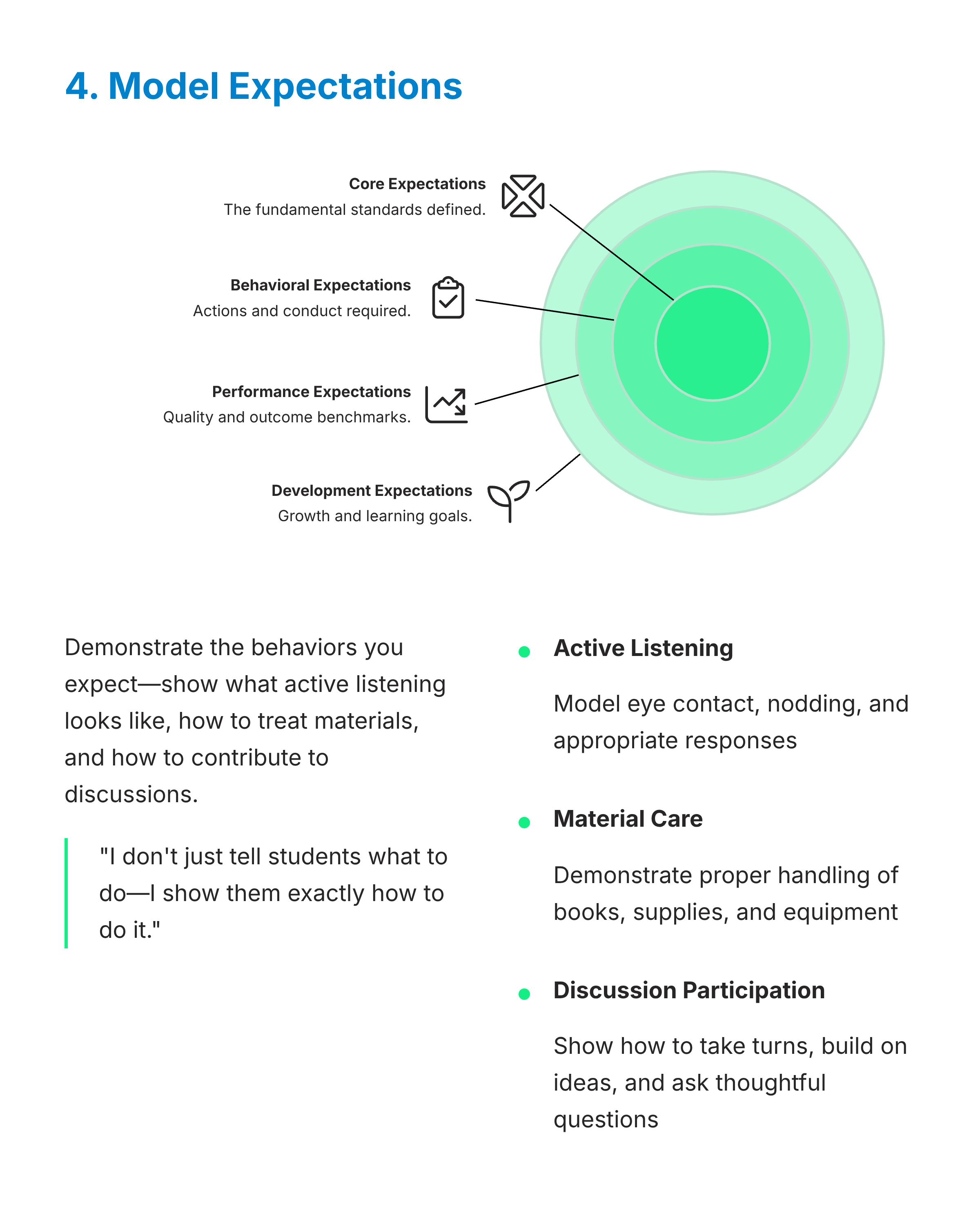
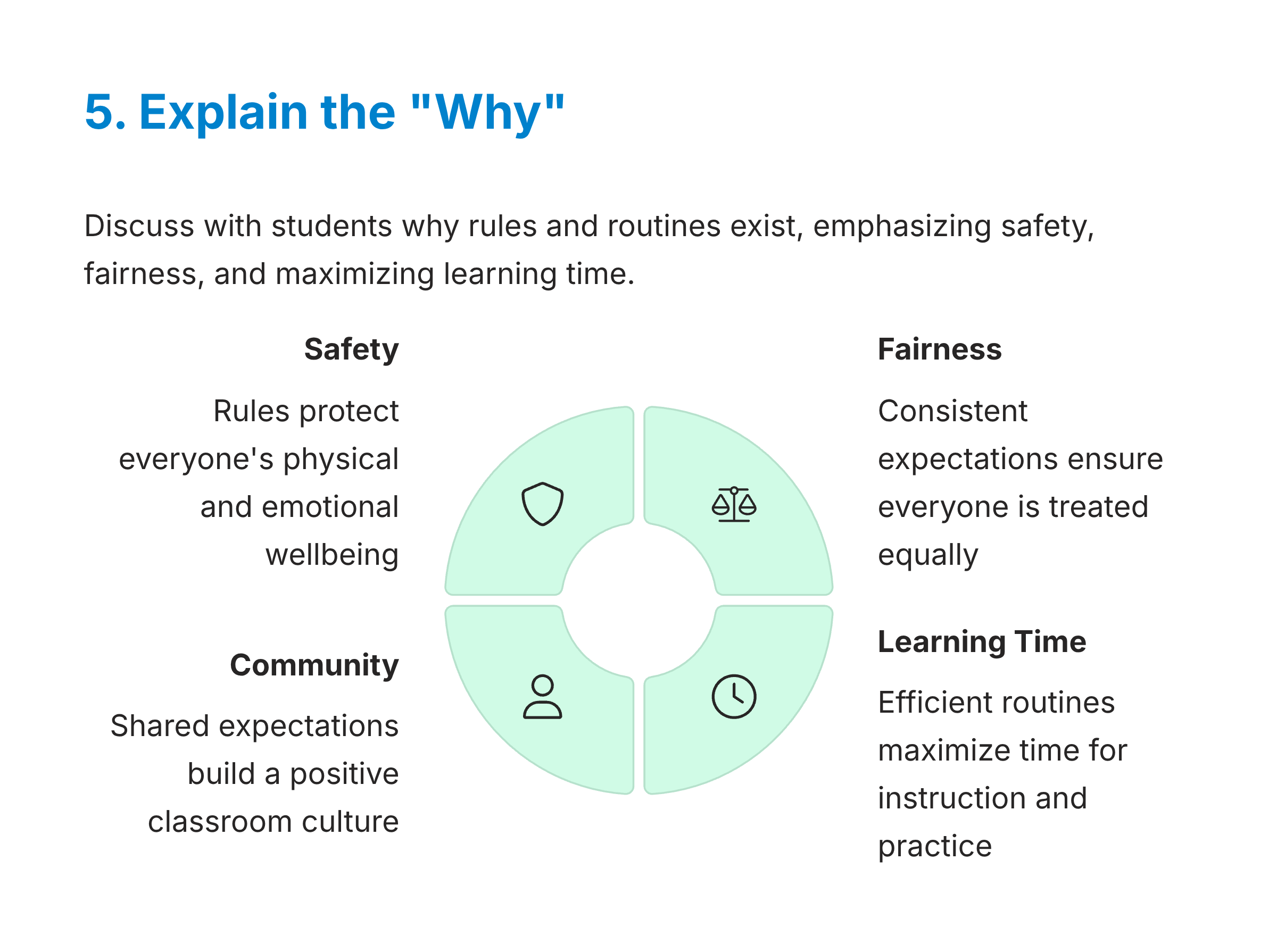
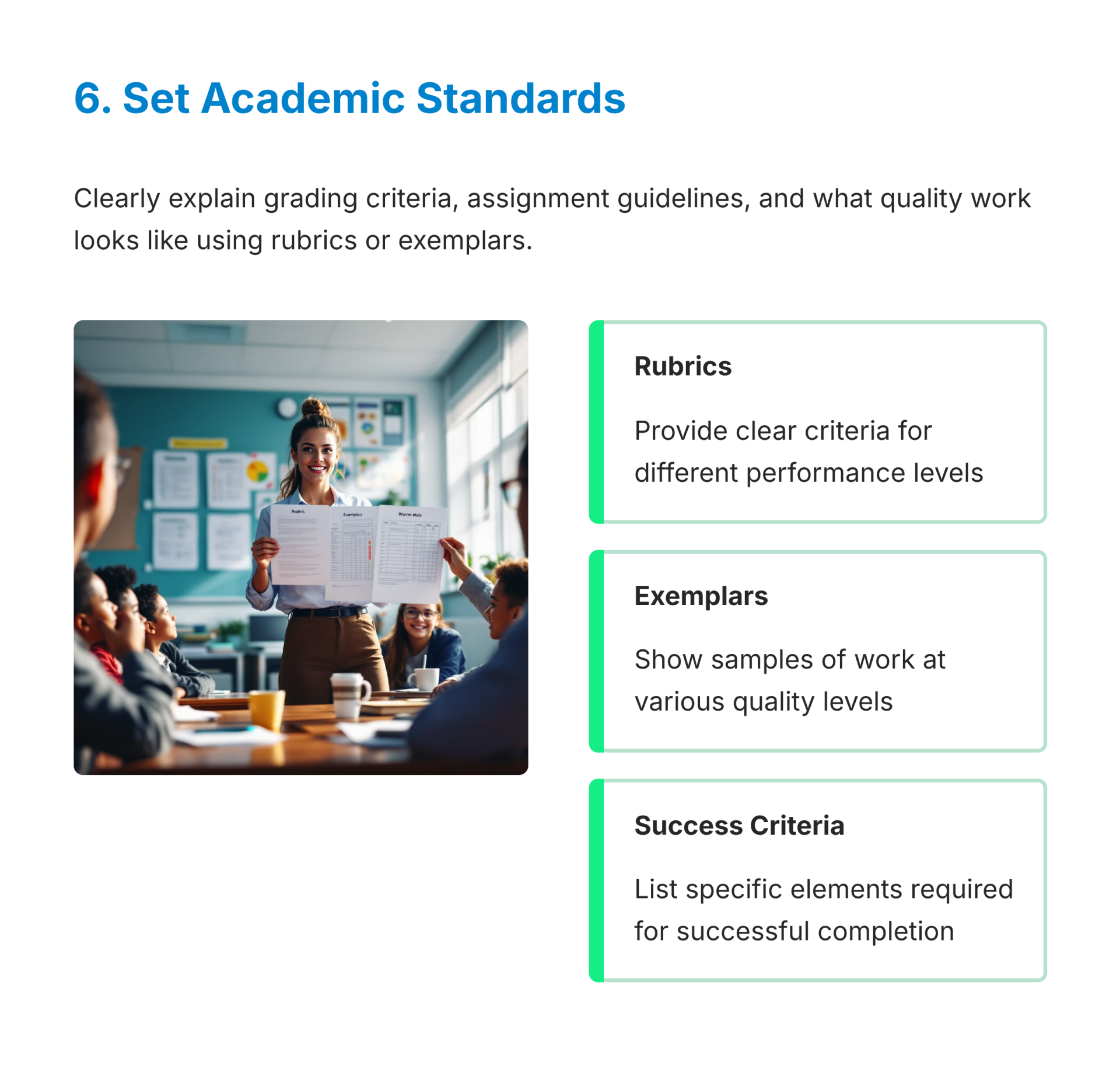
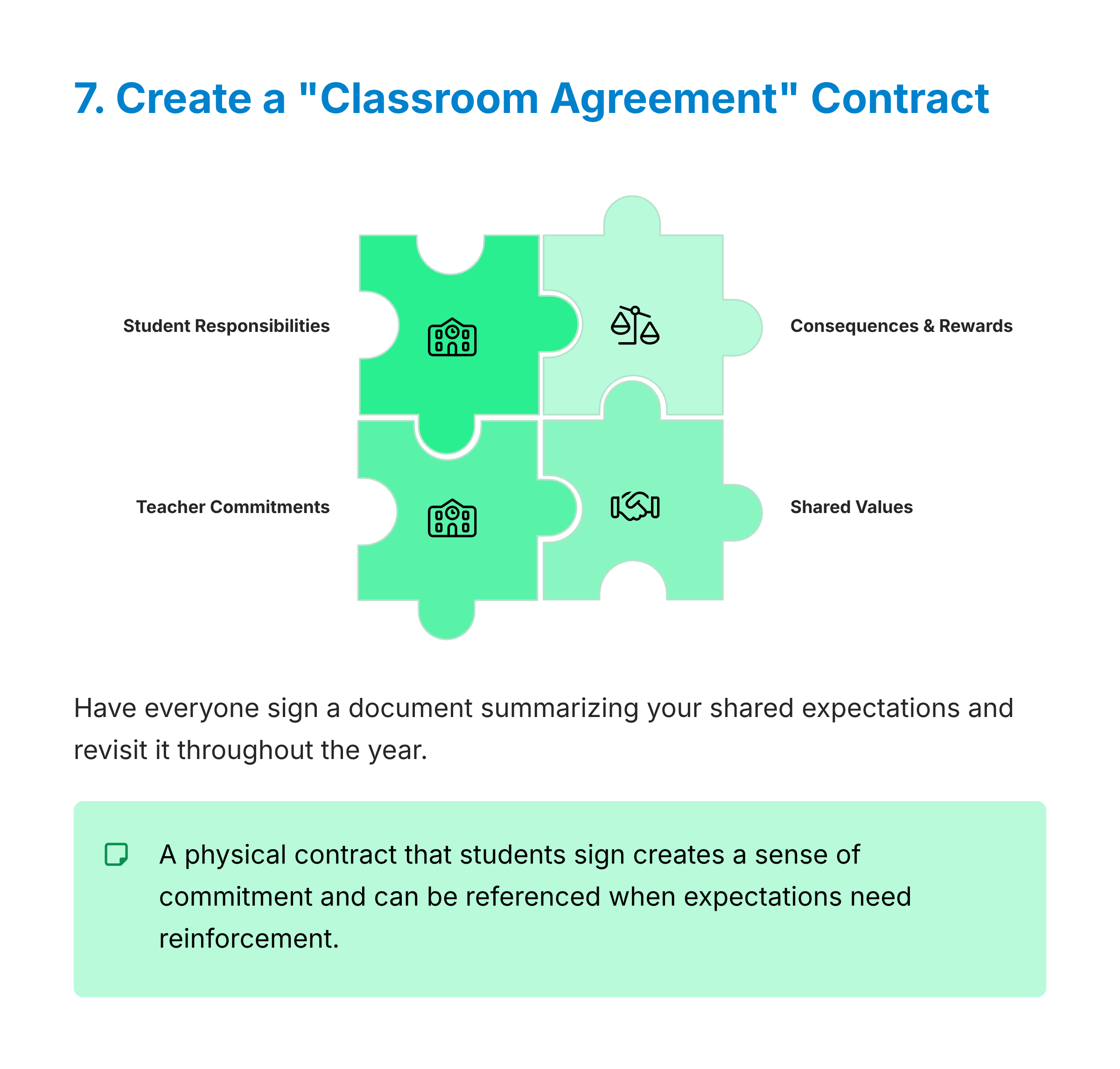
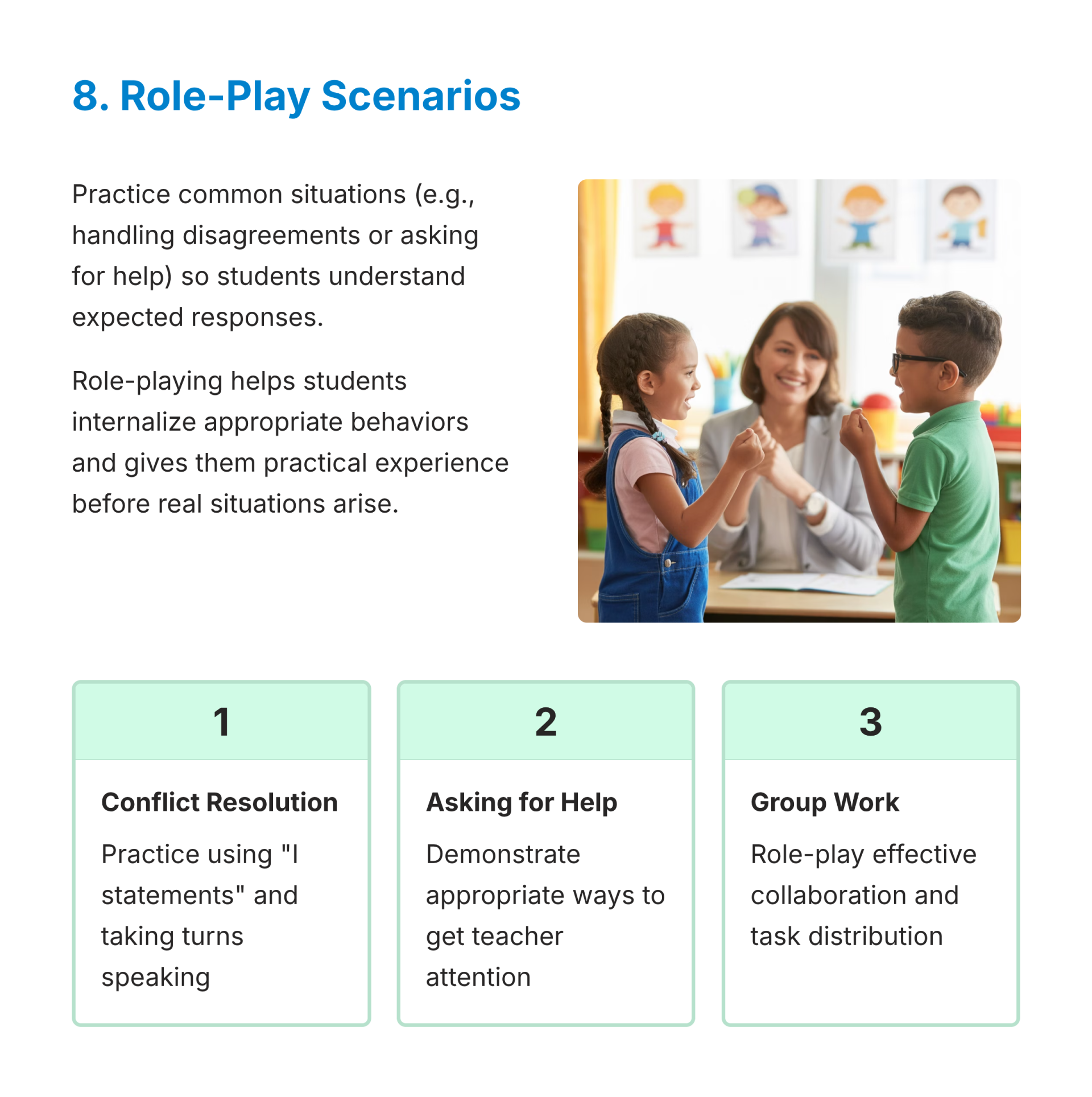

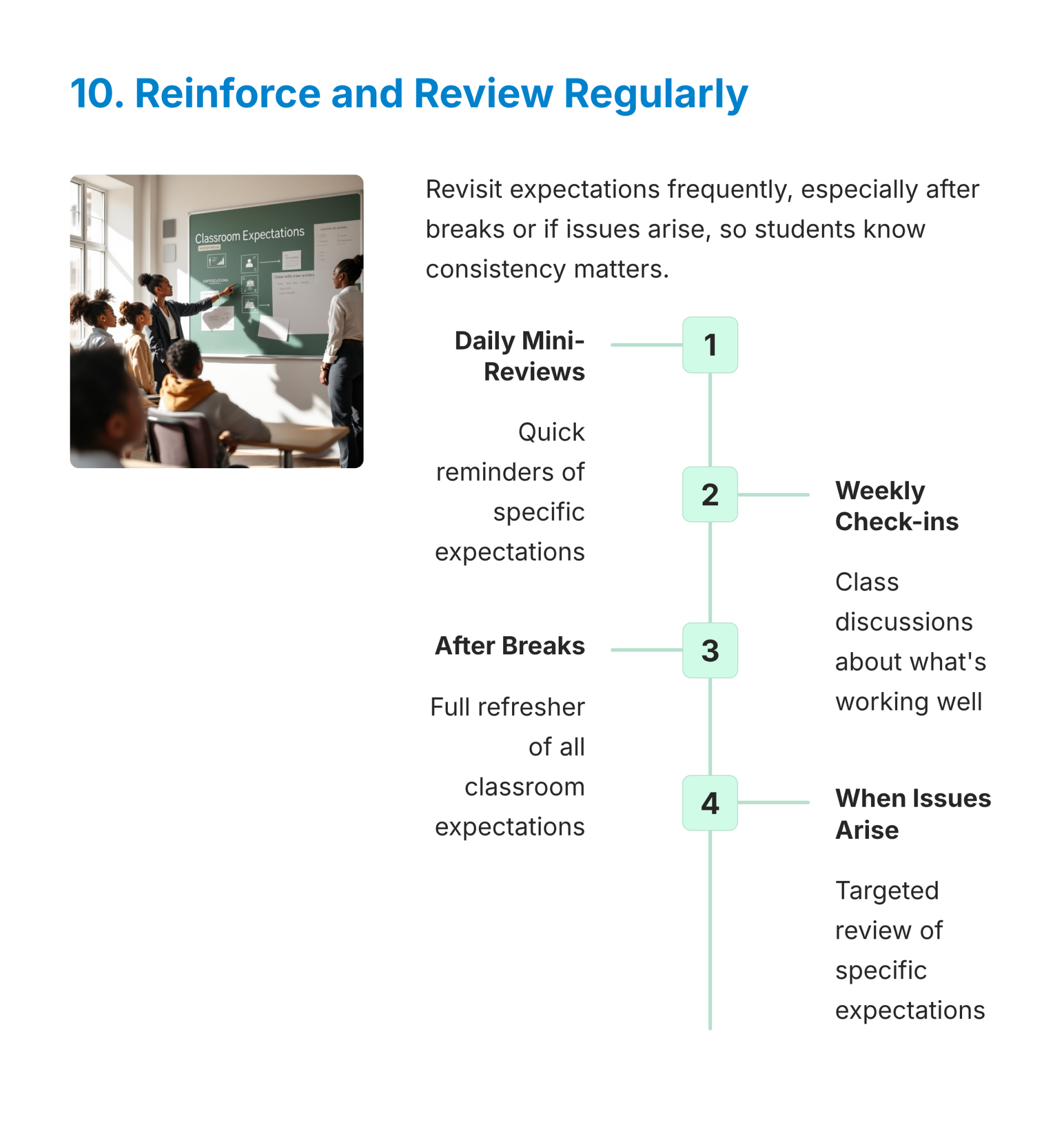
Summary:
Setting Expectations
Co-Create Classroom Rules: Involve students in brainstorming and agreeing on 3-5 concise, positive rules (e.g., “Respect others,” “Raise your hand to speak”).
Establish Routines Early: Teach and practice procedures for daily activities—lining up, turning in homework, transitions—so students know exactly what to do.
Use Visual Aids: Post class rules, daily schedules, and expectations on the wall as visible reminders for everyone.
Model Expectations: Demonstrate the behaviors you expect—show what active listening looks like, how to treat materials, and how to contribute to discussions.
Explain the “Why”: Discuss with students why rules and routines exist, emphasizing safety, fairness, and maximizing learning time.
Set Academic Standards: Clearly explain grading criteria, assignment guidelines, and what quality work looks like using rubrics or exemplars.
Create a “Classroom Agreement” Contract: Have everyone sign a document summarizing your shared expectations and revisit it throughout the year.
Role-Play Scenarios: Practice common situations (e.g., handling disagreements or asking for help) so students understand expected responses.
Communicate Consistently with Families: Send home an outline of your expectations and invite parents/guardians to discuss or ask questions.
Reinforce and Review Regularly: Revisit expectations frequently, especially after breaks or if issues arise, so students know consistency matters.
Establish Routines Early: Teach and practice procedures for daily activities—lining up, turning in homework, transitions—so students know exactly what to do.
Use Visual Aids: Post class rules, daily schedules, and expectations on the wall as visible reminders for everyone.
Model Expectations: Demonstrate the behaviors you expect—show what active listening looks like, how to treat materials, and how to contribute to discussions.
Explain the “Why”: Discuss with students why rules and routines exist, emphasizing safety, fairness, and maximizing learning time.
Set Academic Standards: Clearly explain grading criteria, assignment guidelines, and what quality work looks like using rubrics or exemplars.
Create a “Classroom Agreement” Contract: Have everyone sign a document summarizing your shared expectations and revisit it throughout the year.
Role-Play Scenarios: Practice common situations (e.g., handling disagreements or asking for help) so students understand expected responses.
Communicate Consistently with Families: Send home an outline of your expectations and invite parents/guardians to discuss or ask questions.
Reinforce and Review Regularly: Revisit expectations frequently, especially after breaks or if issues arise, so students know consistency matters.
"Expectations are silent teachers, guiding, shaping, and sometimes surprising, but always requiring our participation."

